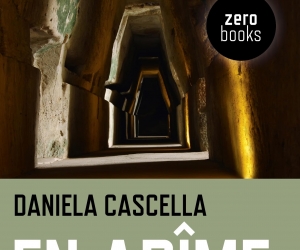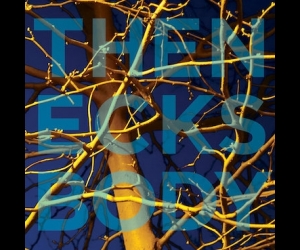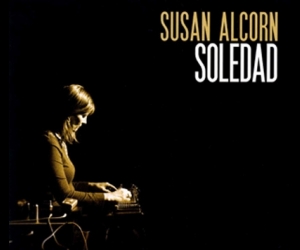Using the words “Venice” and “music” together likely brings Vivaldi to mind. Or if one says Venice Biennale, thoughts turn to contemporary art or perhaps film or architecture. Yet the Venice Festival of Contemporary Music just marked its fifty-sixth edition. Why is it that this festival, with such longevity, with a stated concern for exploring current trends among music creators of our times, and with a special interest in the relationship between contemporary music and the audience, doesn’t seem to be more widely known? The Biennale’s new Director of Music, Ivan Fedele, clearly plans on addressing this head on in his programming. He expressly views new-music creation as a worldwide phenomenon, practiced by an increasingly globalized generation. Fedele is inspired by the growing number of contemporary voices coming from countries like Russia and the former Soviet Union, the Middle East, and the Far East—not to mention the ongoing invention found in North America. On this last strand, however, Fedele favours the U.S.A.: the work of Canadian and other non-U.S.A new world composers was noticeably lacking in this year’s programming. Nonetheless, the 56th Festival was an exhilaratingly intense eight days of endless concerts (twenty-five in total), sound installations, and workshops, featuring no less than sixty-six premières.
Fedele held this mass of content together under the theme Extreme, referring to the musical minimalisms and maximalisms that mark those outlying points of contemporary music creation that may see themselves as opposites, but in fact share parallel intents to abandon decades worth of conventional creation. As you can imagine, Morton Feldman and Terry Riley were well represented from the minimalist side, but new voices like Yannis Kyriakides, Elliott Sharp, and Tristan Perich were also present. For the maximalists, Brian Ferneyhough and Karlheinz Stockhausen held up the banner. Perhaps the boldest statement made in reconciling such extremes occurred with the opening concert by Ensemble Intercontemporain, where Pierre Boulez received the Golden Lion for Lifetime Achievement: an intriguing choice in this John Cage centenary year, and in explicit light of the approaching fiftieth anniversary of Terry Riley’s In C. The gesture helped set the festival’s intent to give permission to a range of juxtapositions.
Although none of the festivals under the Venice Biennale banner are digestible in their entirety, I was able to cover all formats, across all venues—from solo flute in a baroque concert hall, to chamber opera and electroacoustic diffusions. Starting in the Biennale’s home base of Ca’ Giustinian, Quatuor Danel engulfed the clear acoustics of this gran palazzo’s great room with unified sound, excellent ensemble and interpretive skill. “How far have we really come with contemporary music?” I heard the quartet ask through their impeccable programming, which made through lines from Xenakis’ restraint in Ergma to the sonic refinements of Pascal Dusapin’s Fourth Quartet, from Karen Tanaka’s raucous Metal Strings to Xenakis’ seminally aggressive Tetras.
The Italian flutist and vocalist Federica Lotti is clearly beloved by her country’s living composers, and for good reason. The demanding performances she gave of mostly Italian works for flutes and live electronics (with support from Alvise Vidolin) at the very baroque concert hall of the Benedetto Marcello Conservatory of Music demonstrated her command of contemporary techniques alongside impressive vocal agility. Unfortunately, oftentimes the composers’ high-minded concepts didn’t translate from intent to expression. One exception was Chinese composer Tao Yu, whose Peach Blossom Fan delivered a haunting distillation of traditional Peking opera through a well-resolved contemporary lens.
The following day, the remarkably talented Neue Vocalsolisten Stuttgart filled the cavernous Teatro all Tese (a re-purposed Arsenale shipyards warehouse) with two new chamber operas from young Italian composers. Franesca Verunelli’s Serial Sevens explored issues of irreversible memory loss through the forces of seven voices, two percussionists, and video. Over the course of thirty minutes, coherence, reason, and time faded away. Meanwhile, Giovanni Bertelli’s AMGD trapped a family in a Beckett-like impenetrable present, doomed to relive the same anxious experiences without memory of the past or hope for a future. Strong scores marrying sonic invention and structural clarity were met by equally strong production and performances to make this a festival highlight.
The Neue Vocalsolisten returned the next evening with guest bass clarinetist Gareth Davis in an all-premières concert at the smaller Teatro Piccolo Arsenale. The Vocalsolisten are best known for their crisp ensemble work matched by powerful extended technique, which many of the composers here used to their advantage—Elliott Sharp, Oscar Bianchi, and Berhard Gander among them. The singers are also capable of impeccable intonation and beautiful lines, which appeared in some madrigal moments for Johannes Schollhorn’s C-Vier Etudes. But Yannis Kyriakides pushed the ensemble the furthest in his very sparse The World Feels Pressure, where he asked the singers to perform under the influence of Auto-Tune technology. The vocals were constantly coming under pressure from computer-mediated sounds, forcing the audience equally to challenge its perceptions of what was sonically authentic and aesthetically pleasing.
One of the more anticipated events of the Festival was the IANNIX electroacoustic concert. Six young Italian composers had been invited to an extended workshop to explore the IANNIX multimedia-programming platform, which was modelled on the principles of Xenakis’ legendary UPIC graphic composition software. While much of the resulting work was clearly still unresolved, there was merit in a few experiments, most especially Julian Scordato’s quirky little counterpoint Vision II for graphic sequencer and live electronics, and Ivan Solano’s lushly atmospheric Soffio for augmented bass clarinet and video.
With Ivan Fedele having covered so much territory in his first year, it will be interesting to see where he will take this Festival in 2014. He has already made purposeful links to Radio France and New York’s MATA Festival, as well as internal connections to the Drama and Dance Festivals to form a La Biennale College designed to develop new interdisciplinary work. If this year’s festival is any indication of what’s to come, then we should keep our eyes and ears open to Venice for a resurgence of this city as an international hub for new music.
Image by: Colin Ripley


